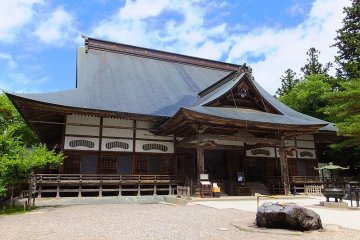
Motsuji Temple
The Motsuji Temple was once a large and important temple of the Tendai sect and consisted of numerous buildings. Today Motsuji is best known for his garden, which tried to recreate the Buddhist concept of the pure land or "Buddhist paradise". The history of the temple tells that in 850 the priest Ennin, the third abbot of the Tendai sect, was traveling in northern Japan when he got lost in a thick fog in this area. When Ennin looked at his feet, he noticed the hair of a white stag. Ennin approached the stag, but it disappeared in the fog. A silver-haired old man appeared in his place and told the abbot that this was a sacred place and that he should build a temple there. Ennin sensed that this old man was an incarnation of Buddha Yakushi and followed his advice. Motsuji has some buildings that are extremely interesting for visitors. This includes the main hall of the temple and a treasure house where Motsuji's historical and cultural artifacts are exhibited.


/141.0480316,38.944319,9/397x132?access_token=pk.eyJ1IjoiamFwYW50cmF2ZWxtYXBzIiwiYSI6ImNqbXBtOXYxbDB5Z3ozbHFrazJuYWMwOGYifQ.v15fy_mcFWtgopmz8PhwqA)
